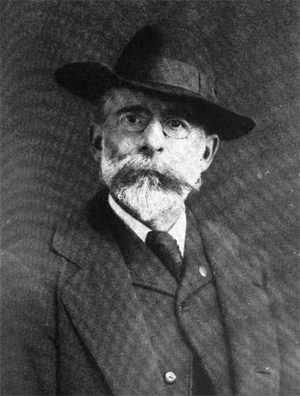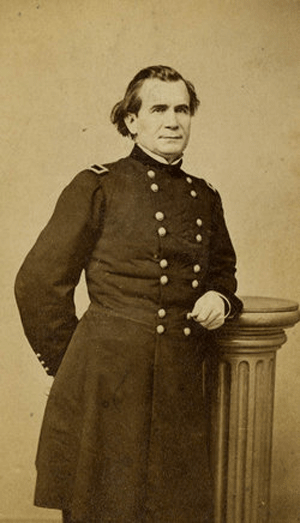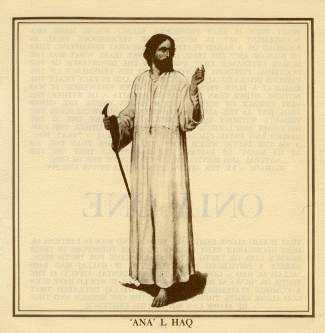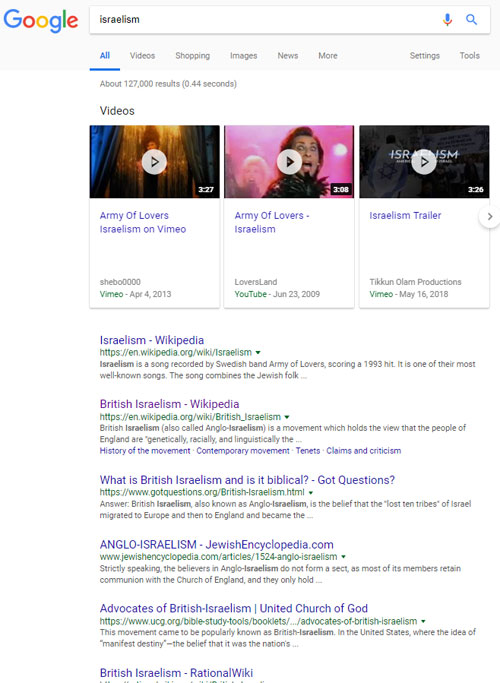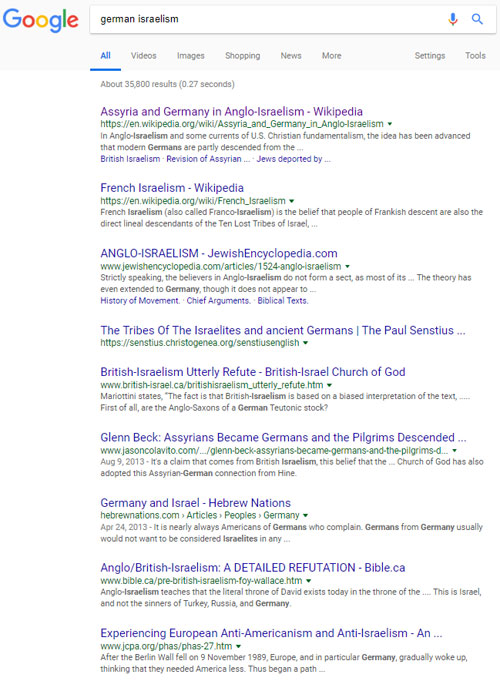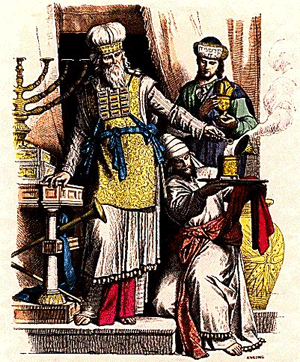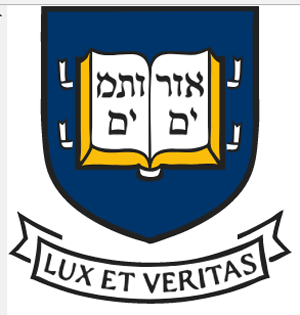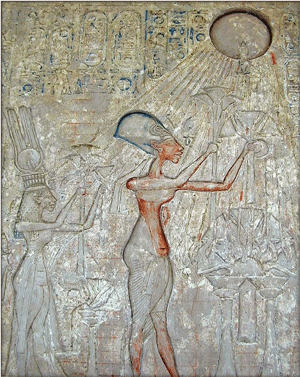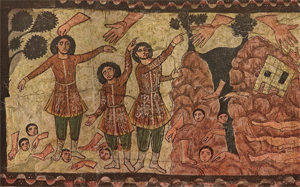The Munsterite Tragedyby Constantine Prokhorov
Novosibirsk Baptist Theological Seminary, Russia
[email protected]UDK:286
Original scientific paper
Received: September, 2013
Accepted: October, 2013
NOTICE: THIS WORK MAY BE PROTECTED BY COPYRIGHTYOU ARE REQUIRED TO READ
THE COPYRIGHT NOTICE AT THIS LINK BEFORE YOU READ THE FOLLOWING WORK, THAT IS AVAILABLE SOLELY FOR PRIVATE STUDY, SCHOLARSHIP OR RESEARCH PURSUANT TO 17 U.S.C. SECTION 107 AND 108. IN THE EVENT THAT THE LIBRARY DETERMINES THAT UNLAWFUL COPYING OF THIS WORK HAS OCCURRED, THE LIBRARY HAS THE RIGHT TO BLOCK THE I.P. ADDRESS AT WHICH THE UNLAWFUL COPYING APPEARED TO HAVE OCCURRED. THANK YOU FOR RESPECTING THE RIGHTS OF COPYRIGHT OWNERS.
SummaryIt is well known that the events at Munster in 1534-35 represent one of the basic reasons why evangelical historians are sometimes reluctant to trace their denominational origins from the Anabaptist (Radical Reformation) movement of the sixteenth century. The author of this article offers a new look at the unfortunately well-known events of the “Munsterite kingdom”, comparing them with analogous events in the Ancient Church and also in contemporary Anabaptist, Roman Catholic, and Protestant (Lutheran, Zwinglian) history. A comparative analysis shows that the situation in Munster applied to the radical wing of the Anabaptists only was, at the same time, not that far beyond the boundaries of religious practice common in Europe at the time. The moderate Anabaptist wing condemned the events at Munster, and future development of the movement, especially among the Mennonites, moved in the direction of absolute pacifism.Introduction: The Events at Munster, 1534 – 1535At the beginning of 1534, the tolerant German town of Munster in Westphalia embarked on an unusual type of Reformation. Radical Anabaptists and Evangelicals (Lutherans) united against the Catholic Bishop Francis Waldeck, and forced him to leave the city. The latter immediately called in troops and began a siege, but was not able to stop all traffic in and out of the city for a long time. Jan Matthijs, the leader of Munster’s Anabaptists, influenced by Melchior Hoffman’s eschatological views, announced on February 25, 1534 that all adult citizens who refused to be baptized “by faith” would be killed as “godless” and “wicked.”Columba Graham Flegg, in a recent study of the Catholic Apostolic Church, includes the Mormons among various religious formations which the Irving tradition had helped to shape: "A further possible candidate for Catholic Apostolic influence might be the eschatology of the Mormons, who were also pre-millennialists and practicers of charismatic gifts ... [and] were prepared to publicize prophetic revelations widely in a way which the Catholic Apostolic apostles largely avoided .... Like the Catholic Apostolics, the Mormons believed in the gathering of Israel to 'Zion' (though locating this in the United States), in a personal return of Christ to reign on earth, and in the gathering together of an elect body in preparation for the Second Advent."
-- Just Too Weird: Bishop Romney and the Mormon Takeover of America: Polygamy, Theocracy, and Subversion, by Webster Griffin Tarpley, Ph.D.
It was, I think, in January, 1855, that a Mormon, named
Joseph Hovey, came to Payson to preach. He was a man of an excitable temperament, a fanatic in religion, and he succeeded in stirring the people up to a state of the most intense religious enthusiasm. He held a series of meetings, which were very largely attended, and such was his peculiar magnetism, that he swayed and held the multitudes who thronged to hear him, notwithstanding he was a man of unprepossessing manner, little education, and no culture. He commenced by accusing the people of all sorts of misdeeds and crimes, and he denounced them in the most scathing and the rudest fashion, and they trembled under his fierce denunciations, and cowered before him as before the face of an accusing angel. He accused them of theft, of licentiousness, of blackguardism, of lying, of swindling and cheating, of hypocrisy and lukewarmness in their religion, and of every other sin, of omission or commission, of which he could think. He represented himself as the Lord's messenger, called by Him, and sent to warn the people of Southern Utah of the horrors of their situation; their souls were in imminent peril, so weighted were they with a load of guilt. "Repent, confess, and be re-baptized," was his urgent call, "and all your sins shall be forgiven you; yea, verily, for so hath the Lord promised."
The excitement grew daily, and his work of "Reformation," as he styled it, went bravely on. Meetings were held, lasting all day and late into the night. It was religious madness run riot. There seemed to be a sort of competition as to who should confess the most and the oftenest. ....
The very next winter, 1856, Brigham and his counsellors instituted a similar reform throughout the entire territory.....
This "Reformation" was more systematically conducted than Hovey's revival; a catechism was compiled by the leading spirits of the church, and printed by their order, and elders were appointed to go from house to house with a copy of it, questioning the people. ...
People were accused of sins which they never had committed, and yet they were afraid to deny them. Some of the elders were shocked beyond measure at the sickening details revealed, and begged that a stop be put to this mania for confession; but the poor fanatics were urged forward by their leaders, and they firmly believed that in the fullest and freest confession lay their only hope of salvation. They were goaded to the very verge of frenzy.
Every person throughout the Territory was commanded to be rebaptized, even if their sins had not been very grave.... Throughout the whole church there was a general time of accusation, confession, restitution, and re-baptism. There were many of the Mormon people who did not approve of all this unhealthy excitement, and who foresaw exactly what results would follow, yet not one of them dared venture a protest. It would have been at the risk of their lives, as it was publicly advised, not only by Hovey in Payson, but by men in much more prominent places, to
punish such persons as ventured a disapproval by "cutting them off from the church, below their ears." It was during this excitement that the terrible doctrine of the Blood-Atonement was first preached.
So high did the feeling run that people who were guilty of certain crimes were counselled to shed their blood to save their souls. Said the arch-fanatic Jedediah M. Grant, in the Tabernacle, speaking of those who had apostatized or were in danger of apostasy,
"What ought this meek people, who keep the commandments of the Lord, to do unto them? 'Why,' says some one, 'they ought to pray to the Lord to kill them.' I want to know if you would wish the Lord to come down and do all your dirty work? Many of the Latter-Day Saints will pray, and petition, and supplicate the Lord to do a thousand things they themselves would be ashamed to do. When a man prays for a thing, he ought to be willing to perform it himself." In the same sermon he said,
"What! do you believe that people would do right and keep the law of God by actually putting to death the transgressors?
Putting to death the transgressors would exhibit the law of God, no matter by whom it was done. That is my opinion."
Following the expression of his belief, he uttered the following fervent wish:
"I wish we were in a situation favorable to our doing that which is justifiable before God, without any contaminating influence of Gentile amalgamation, laws, and traditions, that the people of God might lay the axe to the root of the tree, and that every tree that bringeth not forth good fruit might be hewn down." ...Brigham Young, not to be behind his counsellor, assured the Saints that this doctrine of throat-cutting and blood-shedding was pleasing to the Lord, and that it was a glorious and soul-saving belief. He says,
"There are sins that can be atoned for by an offering on the altar, as in ancient days; and there are sins that the blood of a lamb or calf, or of turtle-doves, cannot remit, but they must be atoned for by the blood of the man."...In a sermon preached from the text, the sweetest and tenderest of all the commandments given by Christ, "Love thy neighbor as thyself," Brigham Young put this peculiarly Christ-like construction on the words:
"When will we love our neighbor as ourselves? Any of you who understand the principles of eternity, if you have sinned a sin requiring the shedding of blood, except the sin unto death, should not be satisfied or rest until your blood should be spilled, that you might gain that salvation you desire. That is the way to love mankind. Now, brethren and sisters, will you live your religion? How many hundreds of times have I asked that question? Will the Latter-Day Saints live their religion?"
He also asked in the same sermon,
"Will you love your brothers and sisters when they have a sin that cannot be atoned for without the shedding of their blood? Will you love that man or that woman well enough to shed their blood? That is what Jesus meant."The time will come when the law of God will be in full force. This is loving our neighbor as ourself: if he needs help, help him; if he wants salvation, and it is necessary to spill his blood upon the earth in order that he may be saved, spill it."
It is no wonder that such language as this, poured into the ears of the already half-crazed Saints, should incite them to deeds of violence.
For a while bloodshed and murder were the order of the day. If any person or family were supposed to be lacking in the faith, and failing to exhibit the usual blind submission to the teachings of the priesthood, that person or family was sure to be visited by some disaster — whipped, mobbed, or murdered, and their property destroyed or confiscated to the use of the church. Some instances came under my own observation, and I tell the incidents from actual knowledge, and not from mere hearsay.
A merchant of Salt Lake City, an Englishman, named Jarvis, was suspected of being cool in the faith, and to have little or no sympathy with the fanatical proceedings which attended the Reformation and formed its chief feature. His store was entered one evening by Saints in disguise, he was pulled over the counter by the hair of his head, dragged into the street and thrown into the snow, his store plundered, all the money taken away, his house set on fire, and his two wives barely given time to escape with their children. As an excuse for all this he was accused of having "spoken against the authorities, and had entertained Gentiles at supper." ...
This outrage is somewhat remarkable, because it was unattended by bloodshed, a most extraordinary circumstance, when so many were killed outright who had sinned as Mr. Jarvis had.
Innocent people suffered, and at that time, no Gentile was safe in the Mormon territory.-- Wife No. 19, the Story of a Life in Bondage, Being a Complete Expose of Mormonism and Revealing the Sorrows, Sacrifices and Sufferings of Women in Polygamy, by Ann Eliza Young, Brigham Young's Apostate Wife
During the next week, the majority of the Catholics and Lutherans left the city; the “Munsterite kingdom” episode had begun. During this first period, the Catholic churches of the city were sacked; their altars and images were broken, the relics of the saints were desecrated, and the wonderful town library was burned.
Thousands of fervent Anabaptists from different places moved to the “holy city, New Jerusalem” (Munster) and occupied the houses of the citizens who had escaped. Some of them were stopped by troops, and others reached the town. On April 4, Jan Matthijs was killed in a fight with the besieging army of Bishop Waldeck. After that,
Jan van Leiden, a young and still more radical leader, became the head of Munster. He immediately abolished the city council and
proclaimed himself “the new King David” of the Messianic “Israelite” kingdom. In obedience to “the voice of the Lord” that he heard, Jan van Leiden chose “twelve elders of the twelve tribes of Israel,” and renamed the citizens “Israelites.”On April 7th, 1842, Joseph Smith received a revelation instructing the establishment of a new organization parallel to the church. Since its inception, this organization has been referred to as the Council of Fifty,... In short,
Joseph Smith ordained the council to be the governing body of the world, with himself as its King....
He then spoke of the standard & ensign that would be reared in Zion, to govern the Kingdom of God And the nations of the earth. For every nation would bow the knee & every tongue confess that JESUS was the Christ. And this will be the standard: The Kingdom of God & his Laws & Judgment in {the [-] if [--] man Christ}. And on the standard would be a flag of every nation under heaven so there would be an invitation to all Nations under heaven to come unto Zion. (5)...
Joseph established the Kingdom in secret and the business of the members was to remain so....Members included a wide demographic of Mormon hierarchy and non-Mormons. All members were chosen by the Prophet. ... Council members were organized into a hierarchy by age and
Joseph was chairman and anointed Prophet, Priest and King over the Council and the world....
Joseph taught that his first-born son in the covenant, David Hyrum – born after Joseph's death, would be this latter-day King over Israel, which teaching was widely recognized by 19th century church leaders.
-- Council of Fifty, by MormonThink
In the view of Hirshson,
the Council of Fifty embodied "the earthly Kingdom of God, the organization destined to plan and control the westward migration ... the Kingdom was to prepare the world for the coming of God." As King of the Kingdom of God on Earth, Joseph Smith appointed fifty-three princes to assist him. "
Unlike the Twelve and the Seventies, the Council of Fifty was an independent organization and theoretically had nothing to do with the Mormon hierarchy." But in reality, its leaders were the same people who controlled the church. The Council of Fifty became Smith's election committee for the 1844 presidential campaign, and also finished building the Nauvoo Temple. (Hirshson, pp. 79-80)
-- Just Too Weird: Bishop Romney and the Mormon Takeover of America: Polygamy, Theocracy, and Subversion, by Webster Griffin Tarpley, Ph.D.
The teaching one might call “Mormon Israelism” was that Ephraim’s descendants were scattered among all nations, but that almost all Mormons were Ephraimites (for some, even “pure” Ephraimites) because the people that had responded to the missionary message were the select few with Israel in their veins. It was taught (including by Joseph Smith) and assumed by some that the more pure the Israelite blood, the more open a person was to the Mormon message.
-- British Israelism, by Stirling
In practice, this meant a period of terror and horror in Munster. To resist the “king” was to resist God’s will and divine revelations. Not a few citizens were executed,especially because of their criticism of the new regime. The official list of capital crimes, based on the Old Testament, included blasphemy, disobedience to the ruling powers, seditious orations, disrespect to parents, adultery, gossip, and complaining. In addition to this revolutionary order, Jan van Leiden instituted by his unchallenged power, the principle of common property and polygamy in Munster. According to contemporary accounts, the king himself had a harem with perhaps fifteen wives (including the Queen Divara of Haarlem, Jan Matthijs’ widow), while the chief ideologist of Munster’s kingdom, Bernard Rothmann, probably had nine wives.Immediately on the arrival of the church in Utah, polygamy was urged upon the people. Having no fear of the outside world, since they were so far removed from it, they laid aside all caution, and preached and practiced it openly. The plural-wives taken in Nauvoo were acknowledged for the first time, and others were added. The men were constantly urged to "build up the kingdom," and in order to do that they were counselled to "take advantage of their privileges." If they did not hasten to obey counsel, they drew down Prophetic and Apostolic wrath onto their heads, and were accused of not "living up to the privileges."....In Nauvoo it had been represented to those who had been told of the new doctrine that it was optional; that no one need enter the relation unless he chose; and, consequently, although they felt it was a cruel doctrine, yet most of the women flattered themselves that their husbands, while they might receive it as a religious truth, would never practice it. But
when the church was located in Utah, away from everybody, where help could never reach the oppressed and miserable, and from whence there was no possibility of escape, then polygamy was no longer optional, but every man was compelled to enter it, under pain of Brigham's displeasure, and its results. -- Wife No. 19, the Story of a Life in Bondage, Being a Complete Expose of Mormonism and Revealing the Sorrows, Sacrifices and Sufferings of Women in Polygamy, by Ann Eliza Young, Brigham Young's Apostate Wife
In the early days of the church, the duty was strongly enjoined of consecrating all the possessions to the Lord; and this was not to be a figurative, but a real consecration; in which all the possessions were to be catalogued and consecrated in legal form, and the transaction authenticated by witnesses. The custodian of this property was to be a "Trustee in Trust," the community into which the faithful Saint thus entered was to be called "The United Order of Enoch," and the property was to be held for the benefit of this community....
Whoever joins this community gives all his earthly possessions into the keeping of Brigham Young. His children, too, are required to sign away all claim or title to the property; if any are too young to write, the pen is given them, and their hands guided by their elders, and they are thus deprived of their rightful patrimony; and in return for all this, the family is to be furnished with what food and clothing the officers think they require.
-- Wife No. 19, the Story of a Life in Bondage, Being a Complete Expose of Mormonism and Revealing the Sorrows, Sacrifices and Sufferings of Women in Polygamy, by Ann Eliza Young, Brigham Young's Apostate Wife
At the beginning of 1535, the situation deteriorated quickly for Munster’s Anabaptists. Bishop Waldeck abandoned his unsuccessful attempts to take the city by force, tightened the ring around its walls, and awaited the results of the famine inside. In June 1535, due to the critical shortage of food, Jan van Leiden sent the women, children, and old men from the city. Many of them were immediately killed by the besieging army. The fall of Munster took place on June 25. The massacre of the Anabaptists continued for two days. Jan van Leiden and two of his officials – Bernhard Knipperdolling and Bernd Krechting – were captured alive. After a series of public spectacles during which the Anabaptist leaders were led from town to town, they were finally tortured to death in Munster on January 20, 1536.
Bound to posts by iron collars, their bodies were torn apart with red-hot pincers. Bishop Waldeck was present at the scene.
When a committee of Mormon leaders went to Governor Harding's office and delivered the resolutions calling on him to resign, he replied in kind.
Harding told the delegation that if they killed him, Union forces would massively retaliate and destroy the Mormon metropolis: "I, too, will prophesy if one drop of my blood is shed by your ministers of vengeance while I am in the discharge of my duty, it will be avenged, and not one stone or adobe in your city will remain upon another.***
Connor now sent word to Bill Hickman, the infamous assassin and the head of the Danites, that the US Army intended to "cross the river Jordan if hell yawned below him." (Saints and the Union, p. 109) This message had its desired effect. Although Hickman had reportedly been taking bets that no federals would ever pass the Jordan River, the Brigham Young regime, despite all of its bluster, now ignominiously backed down, just as when Albert Sidney Johnston's force was finally approaching in 1858. Brigham Young, it would seem, had the psychology of a bully, eager to attack the weak, but equally anxious to avoid a clash with those who would not capitulate. Connor had bested the Mormon Prophet with a decisive show of strength that proved him to be an aggressive and determined commander. Compared to Connor, Brother Brigham was blowing smoke.
-- Just Too Weird: Bishop Romney and the Mormon Takeover of America: Polygamy, Theocracy, and Subversion, by Webster Griffin Tarpley, Ph.D.
Diverse AnabaptismOf course, the events in Munster in 1534-35 are shocking. But was the tragedy something typical of the history of early Anabaptism, or an aberration? To answer this question, we must take into account many factors far removed from the walls of Munster, specifically in other Anabaptist communities, but also in the Catholic, and Protestant (Lutheran, Zwinglian) lands of that time. Because of the limited nature of this article, all aspects of this issue cannot be covered, but at least some directions for further study can be shown. It is not difficult to distinguish two main tendencies (with a few variations) that characterize authors who describe and analyze the nature of early Anabaptism. The first tendency is typical for both Catholic and Protestant writers from Martin Luther to Karl Holl in the twentieth century. Their reasoning is as follows: The Anabaptists were offspring of the revolutionary Thomas Muntzer (according to reformer Heinrich Bullinger); Anabaptism is characterized by terrible “fanaticism” (according to Luther and Calvin) (Snyder, 1995, 397) which reached its logical conclusion in the Munster drama (Weaver, 1987, 91). Some socialist writers, following Karl Kautsky, identified Anabaptism as the “forerunner of modern socialism”, a kind of “medieval communism” (Bender, 1957, 36). “What Bolshevism is today, radical Anabaptism was then,” wrote Presbyterian historian Henry Dosker in 1921 (Dosker, 1921, 65). Anabaptists were also described as “the Bolsheviks of the Reformation” (Preserved Smith), or the “left wing of the Reformation” (Roland Bainton) (McGrath, 2011, 48). Historian Andrew Miller said that the way the Gnostics were seen by the church fathers was the same way in which the Anabaptists were seen by the Reformers: “They were scandalous fanatics” (Miller, 1994, II, 189-190).
The second tendency is the Mennonite historiographical overview that began in the first half of the twentieth century and is associated with such scholars as John Horsch, Harold Bender and others. This school preferred to distinguish the “true,” “genuine” or “original evangelical and constructive” Anabaptists from “aberrations” or “mystical and revolutionary groups” (i.e., the Munsterites) that should not be confused with the true movement (Bender, 1957, 35-37). Developing this concept, Bender traced the roots of such ennobled Anabaptism from Zurich only (monogenesis theory). However,
scholars following the more realistic polygenesis theory find Anabaptist origins in at least three different places: Switzerland, South Germany (and Austria), and North Germany (and Netherlands) (Snyder, 1995, 401-403). In its extreme expression, the Mennonite position is presented in Bender’s statement: “...Another line of interpretation... holds that Anabaptism is the culmination of the Reformation, the fulfillment of the original vision of Luther and Zwingli, and thus makes it a consistent evangelical Protestantism seeking to recreate without compromise the original New Testament church, the vision of Christ and the Apostles” (Bender, 1957, 37).
Thus, to the present day, a number of scholars maintain diametrically opposed estimates of Anabaptism, offering us a predominantly black-and-white view. It is much more productive to attempt to balance these extreme positions. First, however, we must look more closely at Bender’s defense.
The weakness of the apologetic positionFirst of all, whether or not we hold the monogenesis or polygenesis theory of Anabaptist origins, view Anabaptism as a coherent or fragmented movement of the 1520s and 1530s, sympathize with it or despise it, we should recognize that this Reformation movement, like any other movement in human history, was not monolithic. In its own paradoxical way, it always had extreme and moderate tendencies that simultaneously found their own adherents. This simple axiom is the base point for a correct understanding of such apparently contradictory examples of early Anabaptism as the unashamedly peaceful Schleitheim Confession, on the one hand, and the bloody Munsterite revolution on the other; David Joris’ spiritualism, and Menno Simons’ biblicism; Jan van Batenburg killing his enemies, and Dirk Willems saving his enemy’s life.
It is not difficult to understand the motives of Harold Bender and his followers, who, beginning in the 1940s, tried to counter the one-sided view of the radical Reformation that had dominated historiography since the sixteenth century. However, it is impossible to agree with the Bender school’s artificial division of the movement into “true” and “false” Anabaptism. It seems an enormous simplification. Undoubtedly, there were some essential features that united many “mystical and revolutionary” bands of the “stepchildren of the Reformation” with much more respectable groups of believers led by well-educated and wise leaders. The distinctive features of Anabaptism, as we understand them today, were adult believer’s baptism (rejection of the efficacy of infant baptism), strict separation from all government institutions of power, strong opposition to both the Catholic Church and the Protestant Reformers, 1 and (maybe the most important point) the recognition of the majority of Anabaptists (both radicals and moderates), even in the tragic 1530s, that they were, to a large degree, part of a common movement.
If it were not so, it would be impossible to plausibly explain the cause of the renunciation of the Anabaptist brotherhood by such an important and moderate leader as Obbe Philips after Munster. Philips did not say that the Munsterites had not been “true” Anabaptists, but said the opposite in his Confession. 2 Furthermore, without the idea of a wider movement, we cannot understand the story of a company of about 3,000 armed Anabaptists from the Netherlands who, in the spring of 1534, experienced a similar eschatological ecstacy as the residents of Munster and marched to the New Jerusalem in order to escape the Lord’s wrath on the wicked (as the popular new prophet Jan Matthijs proclaimed through his messengers). At Genemuiden, however, they were taken by less than a hundred soldiers, did not resist, and finally turned back (Williams, 1992, 565; Weaver, 1987, 87-88). Historians note ironically that these Anabaptists were waiting for the coming of the prophet Jeremiah and did not want to fight without his approval. For our purposes, the point is this: Why, in similar situations, did one group of Anabaptists use the sword with great freedom (in Munster) while another group was non-resistant, even when they had weapons in their hands (near Genemuiden)? Who were the “true” Anabaptists, and why? Even Menno Simons, whose image is traditionally upheld to support Bender’s concept, and who convinced his followers to condemn Munsterite extremism and directed them on the path of nonviolence, longed to gather what he called “the poor straying sheep” (i.e., mistaken brethren) rather than opposing “false” Anabaptists (George, 1988, 262). In the 1539 edition of Menno’s Foundation Book, he called the Munsterites “dear brethren” who had “formerly acted against the Lord in a minor way” and mainly condemned their leaders for using the sword (Weaver, 1987, 99).
Soon after Munster’s fall, the well-known meeting of Anabaptist leaders (followers of Melchior Hoffman) took place at Bocholt in August 1536. About twenty attended. The conference showed some different streams within the movement at that time and attempted to reach agreement in understanding Melchior Hoffman’s legacy, especially to achieve some unity regarding the urgent question of vengeance against the wicked. The aggressive position of Jan van Batenburg and his followers was condemned, and David Joris’ moderate views won. The position adopted reflected a moderate Melchiorite tendency to spiritualize the most controversial points of discussion, especially regarding the sword (Weaver, 1987, 94-95).
Even the facts mentioned above would be enough to cast doubt on the rightfulness of Bender’s way of seeking to defend Anabaptism. But this, of course, does not mean that we should go to the other extreme and use Munster to support the old Catholic and Reformed tradition of blackening the Anabaptists. What, then, can we say in defense of the Anabaptists against the accusations that have often been made that Munster is typical of the Anabaptist movement?
Munster and the radicalsLet us return to the axiom stated above: Early Anabaptism, like any other social movement, had its radicals and moderates who simultaneously competed with and influenced each other. It was this ongoing internal struggle, together with the ongoing controversy with both the Catholics and Protestants, that developed and refined Anabaptism as a whole. Many leaders of the first generation of Anabaptists were far from minor figures. Conrad Grebel, for example, was from an aristocratic family and the son of a member of the Zurich city council. He received an excellent education at the universities of Paris and Vienna (Smithson, 1935, 54). Balthasar Hubmaier was a doctor of theology (Cairns, 1981, 306). Felix Manz was a fine Hebrew scholar. Michael Sattler, before joining the Anabaptist movement, was the prior of a cloister (Smithson, 1935, 54). Pilgram Marpeck was a respectable member of Rattenberg’s city council and later worked as an engineer in Strasbourg (Snyder, 1995, 78). Many other Anabaptist leaders had been Catholic priests: Wilhelm Reublin, Simon Stumpf, Johannes Brotli, Hans Marquart, etc. Dr. R. Smithson wrote: “It is clear that these early leaders [of the Anabaptists] were men of considerable culture and good social standing” (Smithson, 1935, 54).
Such moderate (relatively, of course) and well-educated leaders had, I would argue, a good chance to rein in their more radical brethren (who existed indisputably from the beginning of Anabaptism – for example, the followers of Thomas Muntzer, the St. Gallen brethren, etc.) and to direct their energy in a peaceful direction. But the problem was that even these so-called “moderate” Anabaptist leaders, who tried to live according to the gospel and plant new churches according to the New Testament pattern, seemed too radical for both the Catholic and Protestant contexts. The Anabaptists were persecuted throughout Europe with the use of severe medieval methods, starting, of course, with their leaders. Almost all the main leaders of early Anabaptism suffered martyrdom. Felix Manz and Michael Sattler were executed in 1527. Hans Hut died in prison in 1527. Balthasar Hubmaier was burned at the stake in 1528. Wolfgang Ulimann and Johannes Brotli were also put to death in 1528. George Blaurock was burned at the stake in 1529 (Snyder, 1995, 75; Smithson, 1935, 552-53).
Looking at the dates of these executions, we can see that they occurred in the period of the infancy of Anabaptism. A few years later, the drama at Munster took place. Undoubtedly the widespread persecutions upset the delicate balance of moderates and radicals among the Anabaptists. This is what gave opportunity to many new, unknown, and, as a rule, ignorant leaders: furrier Melchior Hoffman, baker Jan Matthijs, tailor and street actor Jan van Leiden, etc. Bernard Rothmann, with his Master’s degree from the University of Mainz, was a rare exception in this period (Snyder, 1995, 146), and he used his talents to support the favorite ideas of the Munsterite leaders about vengeance against the wicked, community of goods, and polygamy. These repellant leaders, products of persecution and their own strange eschatology, demonstrated to all of Europe what unrestrained Anabaptist radicalism meant.
However, in spite of the excesses of the radicals’ behavior, it should be noted that the situation was provoked, to a great degree, by the short-sighted policy of Catholic and Protestant authorities. Only the appearance of the moderate leaders of Anabaptism’s second generation, such as David Joris and Menno Simons (after the Munster tragedy), was able to subdue extremists within the movement.
Both the Catholic and Protestant national bodies had the protection of the secular governments in their regions. This was the so-called “Constantinian way” (after Constantine the Great) of the church’s development. Because of these conditions, the adherents of the main Protestant churches were never persecuted to the same extent as the Anabaptists (and some other “separatist” groups). An exception may be during Catholic – Protestant wars, but armed conflict should not be compared with persecution during peace time. To be sure, military action always revealed “fanatics” and “extremists” in the official churches. But does anyone seriously judge the whole of Catholicism or Protestantism because of a few (or even not so few, in war time) extreme examples? If we imagine Catholics and “respectable” Protestants in the same straitened circumstances as Anabaptists, under the heavy press of the state and endless persecutions in peace time, we have every reason to suppose that excesses such as Munster might be found among them as well. Human psychology is interdenominational.
Here it is appropriate to recall the situation of the Western (Catholic) church during the barbarian invasions in the fifth century, and during the Muslim advance in the seventh and eighth centuries. This was a period not only of Christian suffering, but also of Christian (Catholic) extremism. Even in the period of the persecution of the early Christian church by the Roman authorities, we know of some fairly typical incidents when Christians sought martyrdom even when they were not personally threatened with persecution, and defiled pagan sacred objects, proclaiming openly at the same time their faith in Christ (Bolotov, 1994, II, 130.139).
Communism in the twentieth century in the Soviet Union and Eastern Europe also demonstrated that a severe anti-Christian policy regularly produces a reaction of despair: Christian extremism. For example, during this period we find Soviet “radical Anabaptists” in evangelical congregations (especially in the Council of Churches of Evangelical Christians – Baptists), in the Russian Orthodox Church (especially Metropolitan Joseph’s movement and the famous Catacomb Church), and in some other denominations (including Catholic) (Shkarovsky, 1999, 217-260). Northern Ireland gives an example of “Christian terrorism” (Catholic and Protestant) in our own time.
In the Middle Ages, the Catholic Church had the bloody Inquisition (in comparison with Tomas de Torquemada, the Spanish “father-inquisitor” at the end of the fifteenth century, the Munsterites look like very moderate and pious brethren), promoted the terrible crusades (both to free the Holy Sepulchre and to suppress heretics in Europe), connived at the slaughter of the Huguenots in France in 1572, and had many monk-ascetics in their ranks who proved their holiness by never washing, flagellating themselves, walling themselves up in tombs, etc. Thus, even the violence of “the two Jans” (Matthijs and van Leiden) in Munster was in accordance with the practices of their own severe time.
It should not be forgotten that the fathers of the Reformation in the sixteenth century were also far from the spirit of meekness and humility. It is enough to remember Luther’s all but obscene criticism of the papacy, his hostility to Zwingli, his antisemitism, and his call to the German princes to deal in the cruelest way with peasants who revolted (Vipper, 1995, II, 61-63).
Another version of the “New Jerusalem” on earth was Calvin’s Geneva (with corporal punishment for many faults, the execution of heretics, etc.), which, in turn, influenced Puritan extremism in England (Horst, 1972, 67). During the Reformation, Catholics and Protestants alike were zealous in cleansing their territories of “witches” (Robins, 1996, 13). We know of the executions of tens of thousands of unfortunate women in Germany alone. Against such a background, even Rothmann’s dubious writings, such as On Vengeance (1534), and its fanatical applications (for example, by a Munsterite girl, Hille Feyken, who tried to repeat the feat of the apocryphal Judith in the summer of 1534), 3 do not seem to be unheard of.
The above examples are intended to show that it is not especially wise or just to judge a whole movement solely because of extremists who, from time to time, can be met with anywhere in the world. But someone may protest that the Anabaptists, after all, were heretics, and therefore it is not right to compare their “heretical” extremism with the “holy mistakes” of the Catholic Inquisition, for instance. Let us look briefly at this very common line of reasoning.
The concept of “heresy” in Christian theology is not as simple as many people think, and certainly does not allow for a simplified explanation. Consider this: The Anabaptists were killed as heretics by the Catholics, who themselves were heretics from the standpoint of the Orthodox, and by the Protestants, who were heretics from the point of view of both the Orthodox and the Catholics. A confused situation, to say the least. Once, during a crusade against the Cathars in the thirteenth century, when a crusader asked a Roman legate how to distinguish heretics from good Catholics, the remarkable answer was, “Kill everybody! God will know His own in heaven” (Dyck, 1995, 14). Thus, it is not so easy to divide Christians into “true believers” and “heretics.” This has a bearing on events at Munster.
Another view of events at MunsterIn the case of the Munsterite kingdom, of course, it was not only persecution that produced Anabaptist extremism. Historians usually mention the strong eschatological inclinations of the Munsterites (Swartley, 1989, 71; Jansma, 1986, 88-89); however, the atmosphere of persecution undoubtedly created fertile soil for spreading amazing variations on teachings about the “end times” and visions from above. Another important factor influencing the expectation of a speedy end in the early sixteenth century was the serious threat of a Turkish invasion of Europe. 4 As is well known, the Bible often unites the themes of the great sufferings of God’s children and the end of human history, and so the Anabaptists felt keenly that they lived on the threshold of apocalyptic events (Klaassen, 1986, 30-31). Arnold Snyder (1995, 183) writes:
To be an Anabaptist in the sixteenth century meant that one had placed oneself on the margins of acceptable society. It is thus not surprising that a separatist interpretation of Anabaptism came to prevail, and that the biblical themes of the righteous having to suffer at the hands of the unrighteous, the persecution and exile of God’s chosen people, and the final reward of the faithful remnant would become increasingly important in defining the movement.
This point is easily understandable; but why did the extremism of the Anabaptists take a special form, namely the seizure of a town? Some of the key ideas of Anabaptist eschatology answer to that question. The designation of Munster as the “Holy City New Jerusalem” goes back to Melchior Hoffman’s teaching on the Last Days, when, according to this Anabaptist prophet, spiritual revelations would multiply. Before the second coming of Christ, there would be a new outpouring of the Holy Spirit on the earth, and then the righteous would have many great visions and revelations as in the time of the Old Testament prophets (Snyder, 1995, 205). The idea of the “holy city” was a favorite in the Melchiorite eschatological tradition. The New Jerusalem described in the Book of Revelation would be the only place of refuge for the chosen when the day of God’s wrath and vengeance against the godless came. The New Jerusalem would come down to earth, and believers would hear the message from God’s prophets concerning where to seek the holy city to which they should hurry in order to be saved. Melchior Hoffman himself named Strasbourg as the place of gathering; other prophets mentioned Groningen, Amsterdam, Munster and London (Klaassen, 1986, 29-30). Finally, the opinion of the “Enoch of the End Times” (Jan Matthijs) won out: Munster (where the Anabaptists had political weight at that time), not Strasbourg, was seen as the true New Jerusalem. As a matter of fact, this was not the only point of disagreement between Hoffman and Matthijs. The former consistently rejected the use of force by the saints and instead expected “divine intervention” (Isaak, 1986, 79).Some comments need to be made concerning the community of goods and polygamy at Munster in 1534-35. Taking into account that it was a wartime situation, we can probably agree with some commentators who point out that the community of goods in Munster may be justified by the siege of the city and by appeals to the practice of the early church in Jerusalem (Ac 2-4). We may agree or disagree with their approach to private property, but we can understand their reasons. Church history demonstrates many similar episodes of communitarian practice, including in the life of Pope Gregory the Great, St. Francis of Assisi, the Hutterite communities, etc. Sieges in the past have led sometimes to even more radical things because of lack of food – cannibalism, for instance (2Ki 6:26-29). Of course, we can assume that some citizens of Munster were forced to give their property to the community (Verduin, 1964, 237), but we should remember that Jan Matthijs offered the opportunity to leave the city to all who disagreed with the Anabaptist program. In addition, about half the adult males (approximately 800 of 1600) and one-third of the females (1600 of 4800) were not residents of Munster and came there looking for the New Jerusalem (De Bakker, 1986, 111). These newcomers were welcomed as brothers and sisters by the Munsterites and they also needed their daily bread. This also explains the institution of common property in Munster.
The practice of polygamy, of course, is far removed from Christian culture. Here Rothmann’s appeal to Scripture in his basic work Restitution of the True Christian Teaching (1534) was not done in a convincing way because it relies exclusively on the Old Testament examples of the patriarchs which looked to Christians like something foreign and pagan (or Muslim). But even in this doubtful episode, we can find some extenuating circumstances. First, if the community of goods in Munster was something that had relevance to difficult times, polygamy was something unexpected and repugnant for the majority of Anabaptists in the city. Polygamy in general was supported by only a small number of radicals (the leadership and Jan van Batenburg’s followers) (Snyder, 1995, 282). It is well known that there was rebellion against the institution of polygamy in the city. Heinrich Mollenhecke, together with several dozen citizens of Munster even imprisoned Jan van Leiden in an attempt to force him to abolish polygamy. This incident shows the normal Christian reaction of ordinary Munsterites against the pagan innovations of their leaders. However, “King Jan” was released by his followers and soon executed Heinrich Mollenhecke and 48 other dissidents (Weaver, 1987, 89). Nobody wanted to be killed, and so polygamy won out in Munster.
De Bakker writes that since “…women outnumbered men three to one in Anabaptist Munster and since adultery and fornication were both capital crimes in the Holy City, polygamy was the only way to regularize the sexual needs of the women in the community” (De Bakker, 1986, 115). However, polygamy in Munster was imposed on ordinary citizens by the leaders and was often formal rather than actual. There could be both ethical and physical considerations for this (we should not forget about the famine in the besieged city). Apparently it is mainly the settled, preconceived opinion of the Anabaptists’ opponents that prevents us today from interpreting polygamy in Munster as economic assistance, or as care for brothers to sisters in a besieged city, rather than as sexual dissipation (similar to promiscuity) of the majority of the Anabaptists. At the same time, the ruling clique of the Munsterites was doubtless satisfied with Jan van Leiden’s innovation and Rothmann’s arguments for it, and they used and promoted polygamy. Marriage in general, as we know, was an important theme of the Reformation period. The celibacy (sometimes formal) of Catholic priests was one obvious extreme that Protestants opposed. The polygamy of the Munsterites was another extreme that clearly caused Europeans to newly appreciate the value of the traditional Christian family.ConclusionThe majority of the Anabaptists, as has already been said, condemned Munster’s extremism immediately after its fall. The meeting of the Melchiorite leaders at Bocholt in 1536 was very significant in this regard. But even before this, from the end of 1534, the brothers Obbe and Dirk Philips, David Joris, Jacob van Campen, Menno Simons (while he was still a Catholic priest) and some other Anabaptist leaders were teaching against the use of violence to achieve God’s goals (Weaver, 1987, 93; Bender, 1956, 10-11).
This fact testifies to the unquestionable evangelical foundation of the Anabaptist movement as a whole. Without doubt, the Anabaptists were more honest and consistent in their remorse over Munster than, as a rule, were Catholics and Protestants in connection with comparable extremes in their own histories. For example, contemporary official Catholic publications, regardless of many historical facts, still assert concerning the Inquisition: “The duties of this Commission were the following: to find heretics, consider their case, teach them, warn and excommunicate only obstinate persons. This was the end of the duties of this Commission.” This means that all tortures and executions were carried out by the secular authorities only, without the participation of the church. 5 Protestants, as a rule, also seek justification for unpleasant incidents in their ranks in the past. For instance, Calvinists defend Calvin’s violence during his “spiritual rule” in Geneva by appealing to the usual European medieval practices. Andrew Miller writes about the burning of the famous physician and heretic Michael Servetus: “Nobody among both the Catholics and Protestants saw any injustice in the death sentence of the prosecutors and judges for Servetus. Calvin himself wanted the death of the blasphemer, but... he was against the appalling way of execution – burning alive – and demanded a simple killing by the sword” (Miller, 1994, II, 468).
Because of the aforesaid examples, there is only one apparent reason why Munster damaged the reputation of the Anabaptists so much more than the numerous analogous excesses of their opponents did to the name of Catholic and Protestant churches. The Anabaptists judged themselves according to the gospel and Christ’s teaching of nonresistance in the Sermon on the Mount and did not defend themselves seriously (regarding Munster) until the twentieth century (Bender and other Mennonites). By contrast, both Catholics and Protestants spent a lot of energy offering an apologia for their history. As a result, many people today are indulgent toward the historical extremes of the Catholics and Protestants because “it was the severe custom of that time,” while judging the Anabaptists’ extremes according to the high standards of the gospel (as the Anabaptists judged themselves) and of modern civilization. Is this just?
In the author’s view, evangelicals today need not be ashamed of their historical and theological connection with sixteenth-century Anabaptists. Even the most peaceful of Christians can be radicals in extreme circumstances. Doubtless, there were radicals among the Anabaptists from the very beginning of the movement; however, persecution by the authorities increased their ranks and unusually strengthened their apocalyptic vision. The destruction of the educated and moderate first-generation leaders meant that there was no opportunity to stop the radicals without a bloody drama, which is what happened at Munster in 1534 – 1535. Political power proved too great a temptation for the “simple types” among the new Anabaptist leaders. Once again this demonstrates the wisdom of the Schleitheim Confession’s “apolitical” position on the authorities (1527): “The government’s magistracy is according to the flesh, but the Christians’ is according to the Spirit”. After Munster, a new generation of moderate Anabaptist leaders had enough influence to limit the radicals and lead the rest of the compromised movement in a peaceful and orderly direction. Yet, who knows what would have happened if the authorities had caught and executed Menno Simons, Dirk Phillips and a few other leaders? Anabaptist extremism might have returned.
In light of all of the above, we can finally answer the question posed at the beginning of this article as to whether the events at Munster were an aberration that in no way reflected the concerns and ethos of early Anabaptism. The most balanced answer is simultaneously “yes” and “no”. Yes, it was an aberration, if we remember the main, moderate wing of the movement. For moderates, Munster was truly horrible. If we carefully consider the radical wing, then no, it was not a departure from the ideas and practice of early Anabaptism. For the radicals, the Munsterite revolution was the logical development of Anabaptist teaching. The complicating factor is that
Anabaptism can be interpreted as one movement with two very different wings, rather than as two different movements of “true” and “false” Anabaptists. Looking at our contemporary churches and imagining a further period of severe persecutions against Christians, it is not difficult to surmise that we today could experience a wave of problems similar to those that the early Anabaptists experienced.
_______________
Notes:1 “The Anabaptists rejected any kind of state church. For them, the Catholics went far away from the apostolic church, and the Reformers stopped ‘halfway’ in returning to it. All Anabaptists held the teaching on community as the fellowship of believers. For the sake of their community they were ready to suffer until the end. Menno Simons said often that he had loved nothing so much as the community of God’s children” (Brandsma, 1997, 67).
2 “...When I think of the resigned suffering which occurred among the brethren in Amsterdam, in the Old Cloister, in Hazerswoude, in Appingedam, in the Sandt, and, above all, at Munster, my soul is troubled and terrified before it. I shall be silent about all the false commissions, prophecies, visions, dreams, revelations, and unspeakable spiritual pride which immediately from the first hour stole in among the brethren” (Philips, 224).
3 “Hille Feyken... hearing at worship the story of Judith and Holofernes, decided to assassinate the warrior bishop... With a poisoned shirt to present to the bishop, she left the city... and proceeded to the enemy lines, expecting to be let through. She was arrested instead... and vengefully beheaded” (Williams, 1992, 570). We can imagine the kind of sermons preached in Munster, since Judith is an Apocryphal heroine of the Old Testament period. Adherents of the Reformation (including most Anabaptists) normally used the canonical books of Scripture only. Anabaptists considered the New Testament a priority, while the Munsterites based their views mainly on the Old Testament.
4 “Luther and other religious leaders of the day, including the Anabaptists, believed that the Turks were the rod of God’s anger and that they were the forces of evil of the days just preceding the return of Christ and the end of the world” (Klaassen, 1962, 9-10).
5 Chto kazhdy katolik dolzhen znat’ [That Every Catholic Should Know] (Catholic catechism, n.p, n.d.), 63-64.
_______________
BibliographyBender, H. (1957). “The Anabaptist Vision”, in Hershberger, G.F., ed., The Recovery of the Anabaptist Vision. Scottdale, PA: Herald Press.
Bender, H. (1956). “A Brief Biography of Menno Simons”, in The Complete Writings of Menno Simons, trans. by L. Verduin. Scottdale, PA: Herald Press.
Bolotov, V. (1994). Lektsii po Istorii Drevney Tserkvi [Lectures on the History of the Ancient Church], 4 vols. Moscow: Izdanie Spaso-Preobrazhenskogo Valaamskogo Monastyrya.
van Braght, Thieleman J. (1951). The Bloody Theater or Martyrs’ Mirror. Scottdale, PA: Mennonite Publishing House.
Brandsma, J. (1997). Menno Simons iz Witmarsuma [Menno Simons of Witmarsum]. Karaganda, Kazakhstan: Istochnik.
Cairns, E. (1980). Christianity through the Centuries: A History of the Christian Church. Grand Rapids: Zondervan.
Chto kazhdy katolik dolzhen znat’ [That Every Catholic Should Know]. Catholic catechism, n.p., n.d.
De Bakker, W. J. (1986). “Bernard Rothmann: Civic Reformer in Anabaptist Munster,” in Horst, I.B., ed., The Dutch Dissenters: A Critical Companion to their History and Ideas. Leiden: E. J. Brill.
Dosker, H. (1921). The Dutch Anabaptists. Philadelphia: The Judson Press.
Dyck, C. J. (1995). Radikalnaya Reformatsiya [The Radical Reformation] (Moscow, 1995).
George, T. (1988). Theology of the Reformers. Nashville, TN: Broadman Press.
Horst, I. B. (1972). The Radical Brethren: Anabaptism and the English Reformation to 1558. Nieuwkoop: B. De Graaf.
Isaak, H. (1986). “The Struggle for an Evangelical Town”, in Horst, I.B., ed., The Dutch Dissenters: A Critical Companion to their History and Ideas. Leiden: E. J. Brill.
Jansma, L. (1986). “The Rise of the Anabaptist Movement and Societal Changes in Netherlands”, in Horst, I.B., ed., The Dutch Dissenters: A Critical Companion to their History and Ideas. Leiden: E. J. Brill.
Klaassen, W. (1986). “Eschatological Themes in Early Dutch Anabaptism”, in Horst, I.B., ed., The Dutch Dissenters: A Critical Companion to their History and Ideas. Leiden: E. J. Brill.
Klaassen, W. (1962). “The Life and Times of Menno Simons”, in No Other Foundation. North Newton, KS: Bethel College.
McGrath, A. (2011). Reformation Thought: An Introduction, 5th ed. Oxford: Wiley- Blackwell.
Miller, A. (1994). Istoriya khristianskoy Tserkvi [History of Christian Church], 2 vols. GBV, Germany.
Philips, O. “A Confession”, in Williams, G.H., Spiritual and Anabaptist Writers. London: SCM Press, n.d.
Robbins, R. (1996). Entsiklopediya koldovstva i demonologii [Encyclopedia of Witchcraft and Demonology]. Moscow: Lokid.
Shkarovsky, M. (1999). Russkaya Pravoslavnaya Tserkov’ pri Staline i Khrushcheve [The Russian Orthodox Church under Stalin and Khrushchev].(M.: Krutitskoe Patriarshee Podvor’e.
Smithson, R. (1935). The Anabaptists: Their Contribution to our Protestant Heritage. London: James Clarke & Co.
Snyder, C. A. (1995). Anabaptist History and Theology: An Introduction. Kitchener, ON: Pandora Press.
Swartley, W. (1989). “Liberation Theology, Anabaptist Pacifism and Munsterite Violence”, in Schipani D., ed., Freedom and Discipleship. Maryknoll: Orbis Books.
“The Schleitheim Confession”, in Estep, W., ed., Anabaptist Beginnings: A Source Book. Nieukoop: B. De Graaf.
Verduin, L.(1964). The Reformers and Their Stepchildren. Grand Rapids, MI: William B. Eerdmans Publishing Company.
Vipper, R. (1995). “Luter”, in Averintsev, S., ed., Khristianstvo: Entsiklopedichesky Slovar’ [Christianity: Encyclopedia], 3 vols. M.: Bolshaya Rossiyskaya Entsiklopediya, v. II.
Waite, G. K. (1990). David Joris and Dutch Anabaptism 1524-1543. Waterloo, ON: Wilfrid Laurier University Press.
Weaver, J. D. (1987). Becoming Anabaptist. Scottdale, PA: Herald Press.
Williams, G. H. (1992). The Radical Reformation, 3rd ed. Kirksville, MO: Sixteenth Century Journal Publishers, Inc.
Constantine Prokhorov
Münsterska tragedija
Sažetak
Opće je poznato da događaji u Münsteru 1534-35. predstavljaju jedan od temeljnih razloga za kolebanje evanđeoskih povjesničara u ukazivanju da su počeci njihovih denominacija u anabaptističkom pokretu ili pokretu radikalne reformacije u šesnaestom stoljeću. Autor ovoga članka nudi nov pogled na, nažalost, dobro poznate događaje “Münsterskog kraljevstva”, uspoređujući ih sa sličnim događajima u drevnoj Crkvi, te s anabaptističkom, rimokatoličkom i protestantskom (luteranskom, zwinglijanskom) poviješću. Komparativna analiza pokazuje da se situacija u Münsteru odnosi jedino na radikalno krilo anabaptista te da, istovremeno, nije daleko od granica uobičajene vjerske prakse u tadašnjoj Europi. Umjereno anabaptističko krilo osudilo je događaje u Münsteru, dok se kasniji razvoj pokreta, posebice među menonitima, kretao u smjeru apsolutnog pacifizma.

